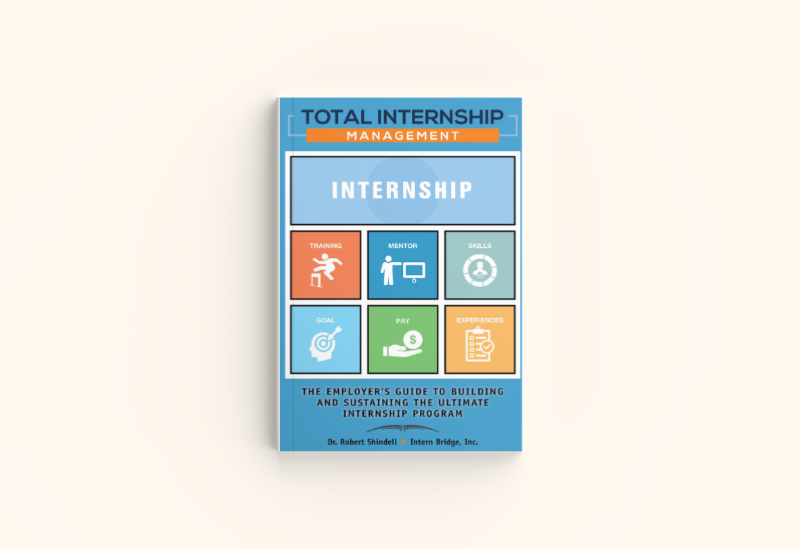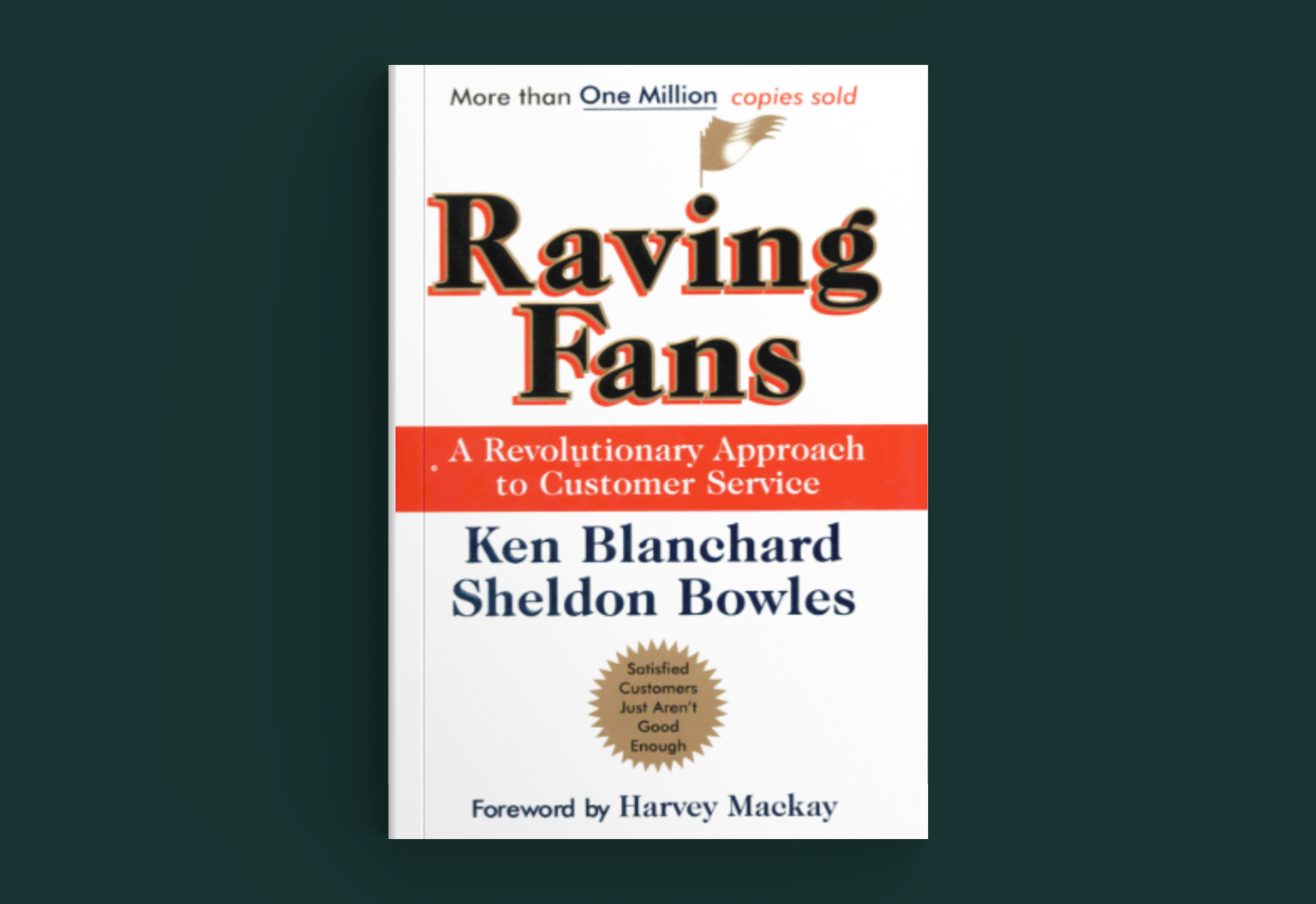Book Bites July 2025: Raving Fans – A Revolutionary Approach to Customer Service
This Month's Selection:Raving Fans – A Revolutionary Approach to Customer Service By Ken Blanchard and Sheldon Bowles The twenty-sixth in a series...

This Month's Selection:
Total Internship Management: The Employer’s Guide to Building and Sustaining the Ultimate Internship Program by Dr. Robert Shindell
The twenty-fourth in a series of Better Impact Book Bites
A taste of great books worth consuming.
As leaders of volunteers, many of us have the opportunity to engage interns as well. Some of us have never considered having interns, and others have considered having interns but have no idea where to start. Dr. Robert Shindell, president and CEO of Intern Bridge, skillfully breaks down the internship program creation (and improvement) process into bite-sized, easy-to-digest actionable pieces. Total Internship Management is an excellent resource to guide and assist you no matter what stage your internship program is in. It’s 189 pages, an easy read and most importantly, a very practical guide with easy-to-implement practices. The appendix includes a plethora of resources including additional readings on internships, rubrics and more. An accompanying supervisor’s handbook can be purchased alongside for additional guidance curated for the intern supervisor.
Scholars in the field of student learning agree that experiential learning experiences that combine academic learning with real world experience is the perfect learning combination. Students having the opportunity to apply what they learn in the classroom in actual scenarios offers full circle learning. Studies show that students who participate in internships have higher starting salaries, higher job satisfaction, more job offers and and additional career advantages. Internships have proven so beneficial that colleges and universities began integrating them into their curriculum. So, is your organization open to and/or ready to host interns in such a way that is beneficial to the participant and the community? This book is designed to help you discover the answer.
Chapter one explores the various reasons (some good, some bad) why companies and organizations make the decision to host interns. The author shares some of the most common reasons companies cited for deciding to start an internship program from both companies who have and have not hosted interns. The difference in ranking is very interesting. Do you see your reason? Hopefully it falls within the non-problematic reasons. Even if it does, this book is a catalyst to a paradigm shift.
I love this chapter because it addresses the “how can we serve if we don’t know what they need?” question. It shares from various students why they seek internships. Some of their answers may surprise you. This chapter is a reminder that we should never assume why someone does something. Once we get insight from those who the program is designed to help, the results will always be more impactful. The end of this chapter, similarly to Chapter 1, lists and ranks the responses. Again, you may be surprised.
The most important part of any program in general is understanding the “why” behind it and then building a strong foundation. Chapter three takes the guessing game out of what an internship is and what it is not. It explains the difference between internships and co-ops and why an organized program is important. It illustrates ways to gain buy-in from others in the organization, from the executives to non-managerial staff. It discusses typical internship schedules (winter vs fall semesters) and manages expectations regarding how much time an intern can be expected to commit to your organization.
Chapter four helps to determine the type of meaningful work an intern can participate in. From short and long-term projects to determining learning objectives and SMART goals. It discusses the importance of the internship position description and not being afraid to challenge interns. The greater the experience an intern has coming into an internship the greater the opportunities for them. Although menial tasks are important in any job, their internship shouldn’t be a collective of menial tasks. Lastly, the chapter concludes by encouraging organizations to design the program with the 8 core competencies in mind. You have to read the book to find out what they are. Believe me, it will be well worth the read.
Ahhhhh the M word. This chapter prepares you to spread the word about your program once it is established. It asks the important question to help you narrow down your target audience before wasting a lot of money on misguided marketing efforts.
Chapter six defines the 6 easy steps to working with colleges and universities but warns that with each institution, the time and effort and response will vary, so be patient. The process may take a while, but it is well worth it. This chapter gives guidance on who to collaborate with, how to build the relationship and insight into how to reach the students you are interested in from in person campus visits to career fairs.
Once you’ve shared the opportunity successfully and resumes start rolling in, you are ready to start the hiring process. This chapter guides you on what to look for in a resume that will help to determine if the candidate is a good fit for your opportunity. It covers interview questions, student availability, background and reference checks and offers 12 criteria that organizations who have hosted interns deem important in order of importance.
This chapter speaks frankly regarding the sensitive and sometimes controversial subject of intern compensation. It explores all aspects of compensation—from earning college credit to financial compensation and other benefits. This chapter is a must read, especially the benefits, because they are not what many would typically think of. Compensation may be sensitive, but it can be handled well with guidance.
“An individual who is an excellent supervisor of full-time, experienced individuals may not necessarily be the most effective internship supervisor.” These are powerful words. Chapter nine discusses what makes a successful intern supervisor and how to identify potential mentors. What surprised me the most about this chapter was the section dedicated to alcohol and interns! Honestly, it wasn’t something I ever had on my radar but apparently it happens often enough that it earned a spot in this chapter…and it is worth the read. Another interesting tidbit was the encouragement to “let mentors and interns choose for themselves” and of course FEEDBACK, my favorite topic of all time. This chapter covers emotional safety provided by mentors to interns, the four key developmental behaviors that are enabled by a good mentor and KSA’s (knowledge, skills and attitudes).
The on-boarding experience sets the tone for the internship experience. Great on-boarding can help your interns settle in and feel a part of the team. This chapter discusses who to include during the on-boarding process, thinking twice about icebreakers and most importantly, how onboarding is the opportunity to set and manage expectations for the internship.
This chapter is all about helping to make sure the intern has a meaningful experience and the tools that you can use from evaluations and FEEDBACK to help the intern be as successful as possible.
When the internship comes to an end it is something to be celebrated! Off-boarding correctly shows appreciation to the intern and bolster their impression of the organization of a great place to work and/or share the internship with others. From showing appreciation, to gaining valuable feedback, to job offers, this chapter covers all aspects of impactful off-boarding.
Assessment and evaluation is vital to any program to gauge its impact. This chapter guides the reader through best practices in individual and program assessments to obtain data to accurately assess programmatic outcomes. Additionally, it offers components of impactful internship programs to help serve as a benchmark to guide their program against.
A strong internship program can be a strong conduit to a thriving community. As experienced professionals share their learnings with rising professionals (or those wishing to make a career change) and those willing to share their skills to help organizations achieve their goals is a demonstration of UBUNTU..the understanding that when we all help each other our community is strengthened. This book concludes with a wonderful word cloud that students have used to sum up their internship experiences. It sparks joy and sadness. I hope this book helps you curate a program that elicits only words of joy from those who participate. Lastly, I had the wonderful opportunity to sit down with Dr. Shindell to discuss internships on “From the Suggestion Box”, my podcast. I invite you to take a listen to the episode and wish you the best of luck with your internship program.
Featured Posts

This Month's Selection:Raving Fans – A Revolutionary Approach to Customer Service By Ken Blanchard and Sheldon Bowles The twenty-sixth in a series...

On November 5th, 2025 Volunteer Engagement Professionals across the globe will be marking International Volunteer Managers Day (IVMDay). And this...

This Month's Selection:No More Status Quo – A Proven Framework to Change the Way We Change the World By Heather Hiscox The twenty-fifth in a series...